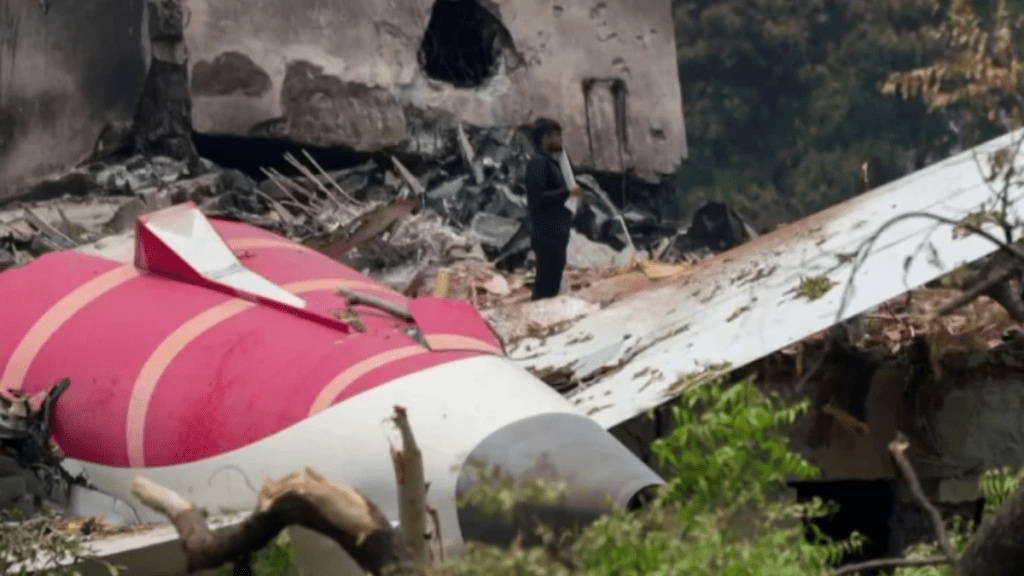Air India crash report: As the preliminary report into one of the country’s worst aircraft accidents has been released by the Aircraft Accident Investigation Bureau (AAIB), here is a summary of the developments since June 12.
Air India’s nearly 12-year-old Boeing 787-8 aircraft, VT-ANB, enroute to London Gatwick, crashed soon after takeoff into the residential quarters of BJ Medical College in Ahmedabad on June 12. There were 242 people on board, including 12 crew members. While only one passenger survived, many people on the ground also lost their lives, bringing the total death toll to 260.
The lone survivor, British national Vishwash Kumar Ramesh (45), was seated in seat ’11A’, a window seat near one of the emergency exit doors.
The Ahmedabad crash marks the first time that Boeing’s best-selling 787 Dreamliner has suffered a fatal accident resulting in hull loss.
On June 13, the AAIB initiated an investigation and set up a multi-disciplinary team. A high-level committee headed by the Union Home Secretary was also constituted on the same day to examine the causes behind the crash and to suggest comprehensive guidelines to prevent such incidents in the future.
On June 14, Civil Aviation Minister K Rammohan Naidu stated that all theories surrounding the plane crash would be analysed.
Both the Cockpit Voice Recorder (CVR) and Flight Data Recorder (FDR) were recovered — one from the rooftop of a building at the crash site on June 13 and the other from the debris on June 16.
The black boxes were transported from Ahmedabad to Delhi by Indian Air Force aircraft under full security on June 24. The front black box arrived at the AAIB Lab in Delhi with the Director General of AAIB at 1400 hours on June 24. The rear black box was brought by a second AAIB team and reached the AAIB Lab at 1715 hours on the same day. The data extraction process began that day itself.
On June 25, the Crash Protection Module (CPM) from the front black box was safely retrieved. The memory module was successfully accessed and its data downloaded.
Observer status has been accorded to an expert from the United Nations body, the International Civil Aviation Organization (ICAO), in the ongoing probe.
Air India is currently observing a ‘Safety Pause’, a deliberate temporary scale-back of its international and domestic networks. The airline has reduced 38 services per week on international routes and suspended services on three overseas routes operated with wide-body aircraft. Additionally, it has cut services on 19 domestic routes and suspended three international services operated by its narrow-body fleet until at least mid-July.
Air India CEO and Managing Director Campbell Wilson stated, “The ‘pause’ was an important and necessary move to accommodate voluntary additional aircraft checks, navigate the volatile international airspace environment and to stabilise our flight schedule to restore faith and trust.”
A day after the crash, the Directorate General of Civil Aviation (DGCA) ordered enhanced safety inspections of the airline’s Boeing 787 Dreamliner fleet. Air India also decided to carry out enhanced safety checks of its Boeing 777 aircraft fleet.
Tata Sons, the parent company of Air India, announced compensation of Rs 1 crore to each family of the victims as well as the survivors. In addition, Air India is providing an interim compensation of Rs 25 lakh.
Air India has also deployed a team of trained psychologists to provide trauma counselling and psychological support to the affected families.


